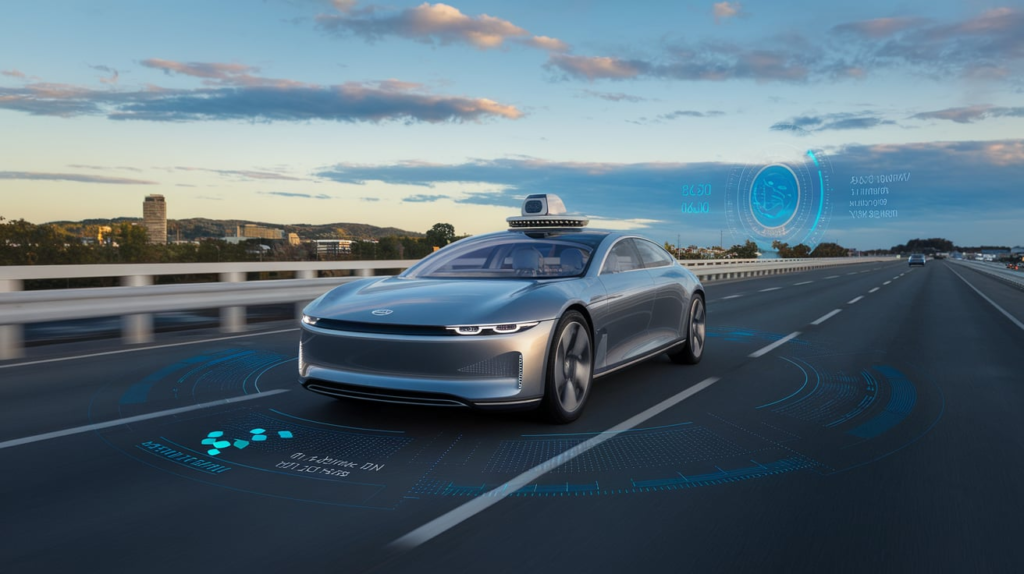The Future of Autonomous Cars: How Self-Driving Technology Will Change the Way We Travel
The automotive industry is undergoing a massive transformation with the advent of autonomous cars. These vehicles, equipped with advanced sensors, machine learning algorithms, and AI-driven systems, promise to revolutionize the way we travel. From improving road safety to reducing traffic congestion, self-driving technology is set to reshape the future of transportation. In this article, we’ll explore the potential of autonomous cars, their benefits, challenges, and the impact they will have on our daily lives.

What Are Autonomous Cars?
Autonomous cars, also known as self-driving cars, are vehicles capable of sensing their environment and navigating without human input. They use a combination of:
- LIDAR and RADAR sensors to detect obstacles.
- Cameras for real-time visual processing.
- AI and machine learning to interpret data and make decisions.
Levels of automation range from Level 1 (driver assistance) to Level 5 (fully autonomous), with most current advancements focusing on Levels 3 and 4.
Benefits of Autonomous Cars
1. Enhanced Road Safety
- Human error accounts for nearly 94% of road accidents in the U.S.
- Autonomous vehicles can significantly reduce accidents by reacting faster and eliminating distractions like texting or fatigue.
2. Reduced Traffic Congestion
- Autonomous cars can optimize routes, reduce traffic jams, and enable smoother traffic flow through vehicle-to-vehicle (V2V) communication.
3. Increased Accessibility
- Elderly, disabled, and non-drivers can gain independence and mobility with self-driving cars.
4. Environmental Benefits
- Improved fuel efficiency through optimized driving.
- Potential to integrate with electric vehicles (EVs), reducing greenhouse gas emissions.
5. Lower Transportation Costs
- Self-driving car-sharing services can reduce the need for personal vehicle ownership.
Challenges Facing Autonomous Cars
1. High Development Costs
Building autonomous cars requires significant investment in R&D, making them initially expensive for consumers.
2. Legal and Regulatory Hurdles
Laws around liability, data privacy, and safety standards for autonomous cars vary globally and are still evolving.
3. Cybersecurity Risks
Self-driving cars are vulnerable to hacking, which could compromise safety and privacy.
4. Public Acceptance
Many people remain skeptical about trusting AI-driven systems with their lives.
5. Job Displacement
Widespread adoption of autonomous vehicles could lead to job losses in industries like trucking and taxi services.
Industries Benefiting from Autonomous Cars
1. Logistics and Delivery
Companies like Amazon and FedEx are exploring autonomous delivery vehicles and drones to speed up last-mile delivery.
2. Ride-Sharing Services
Uber and Waymo are developing autonomous fleets to lower operational costs and improve service availability.
3. Public Transportation
Self-driving buses and shuttles can enhance the efficiency and safety of urban transit systems.
Top Companies Leading the Way
- Tesla: Pioneering autonomous features like Autopilot and Full Self-Driving (FSD).
- Waymo: Google’s subsidiary focused on fully autonomous vehicles.
- GM Cruise: Developing self-driving electric vehicles.
- Aurora: Partnering with truck manufacturers for autonomous freight solutions.
- Apple: Secretive but heavily invested in autonomous car development.
Impact on Car Ownership
The rise of autonomous cars could lead to a decline in personal car ownership. People may prefer on-demand autonomous ride-sharing services over maintaining their own vehicles, especially in urban areas where parking and congestion are major issues.
FAQs
1. Are autonomous cars available to the public?
Yes, companies like Tesla and Waymo have introduced vehicles with self-driving features, but fully autonomous cars are not yet widely available.
2. How safe are autonomous cars?
Studies suggest that autonomous cars can significantly reduce accidents caused by human error. However, safety improvements depend on technology maturity and regulatory oversight.
3. When will fully autonomous cars become mainstream?
Experts predict that Level 5 fully autonomous cars could become mainstream within the next 10–15 years, depending on technological and regulatory advancements.
4. How do autonomous cars handle bad weather?
Adverse weather like heavy rain or snow can interfere with sensors, but companies are working to improve system reliability in such conditions.
5. What is the biggest challenge for autonomous cars?
Public trust and the establishment of universal regulations are among the biggest hurdles.
Conclusion
Autonomous cars represent a groundbreaking shift in the automotive world. While challenges remain, their potential to make transportation safer, more efficient, and accessible is undeniable. As technology advances and societal acceptance grows, self-driving cars will undoubtedly redefine the way we travel. Whether you’re an early adopter or a curious observer, the era of autonomous vehicles is one to watch closely.

Post Comment